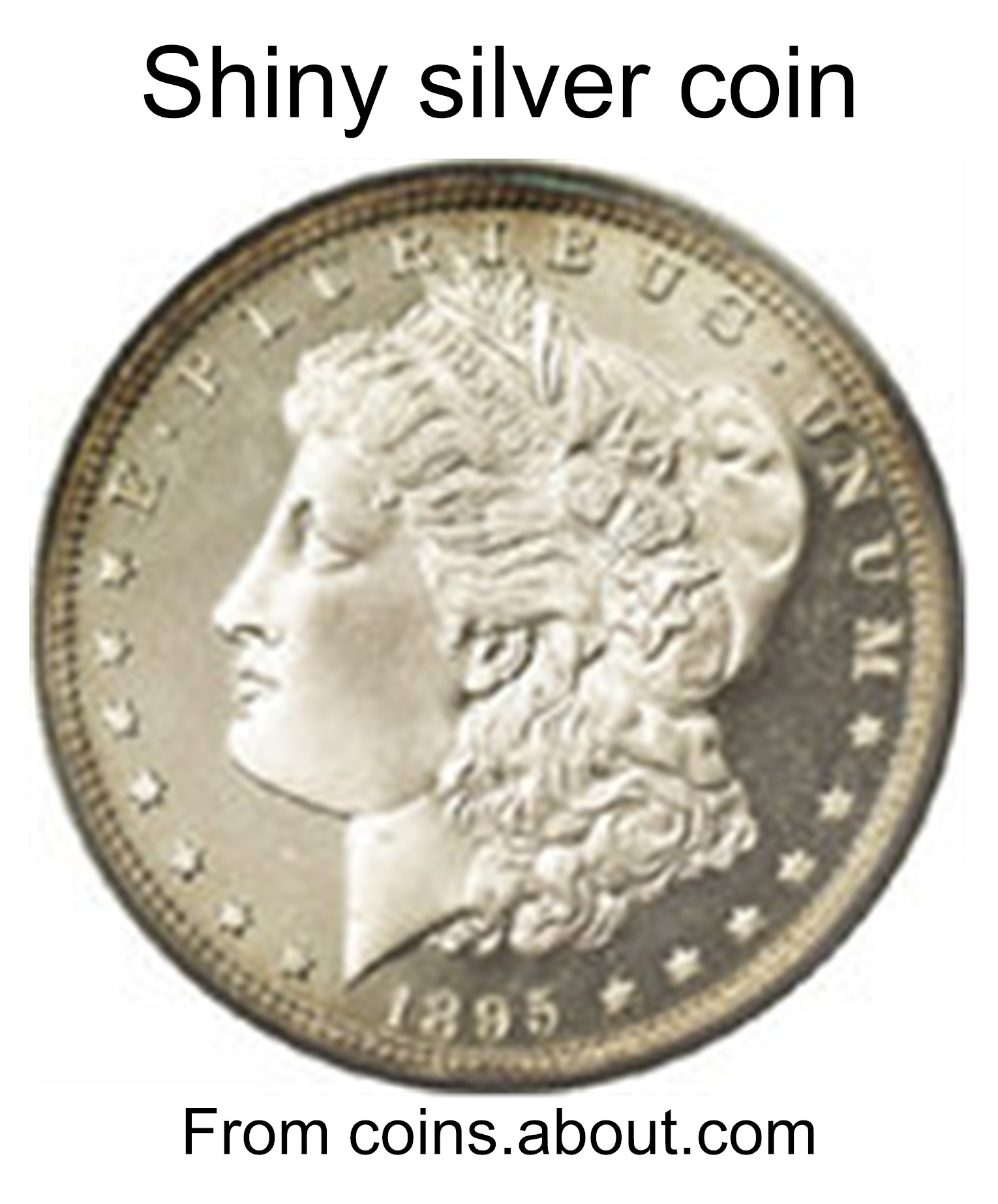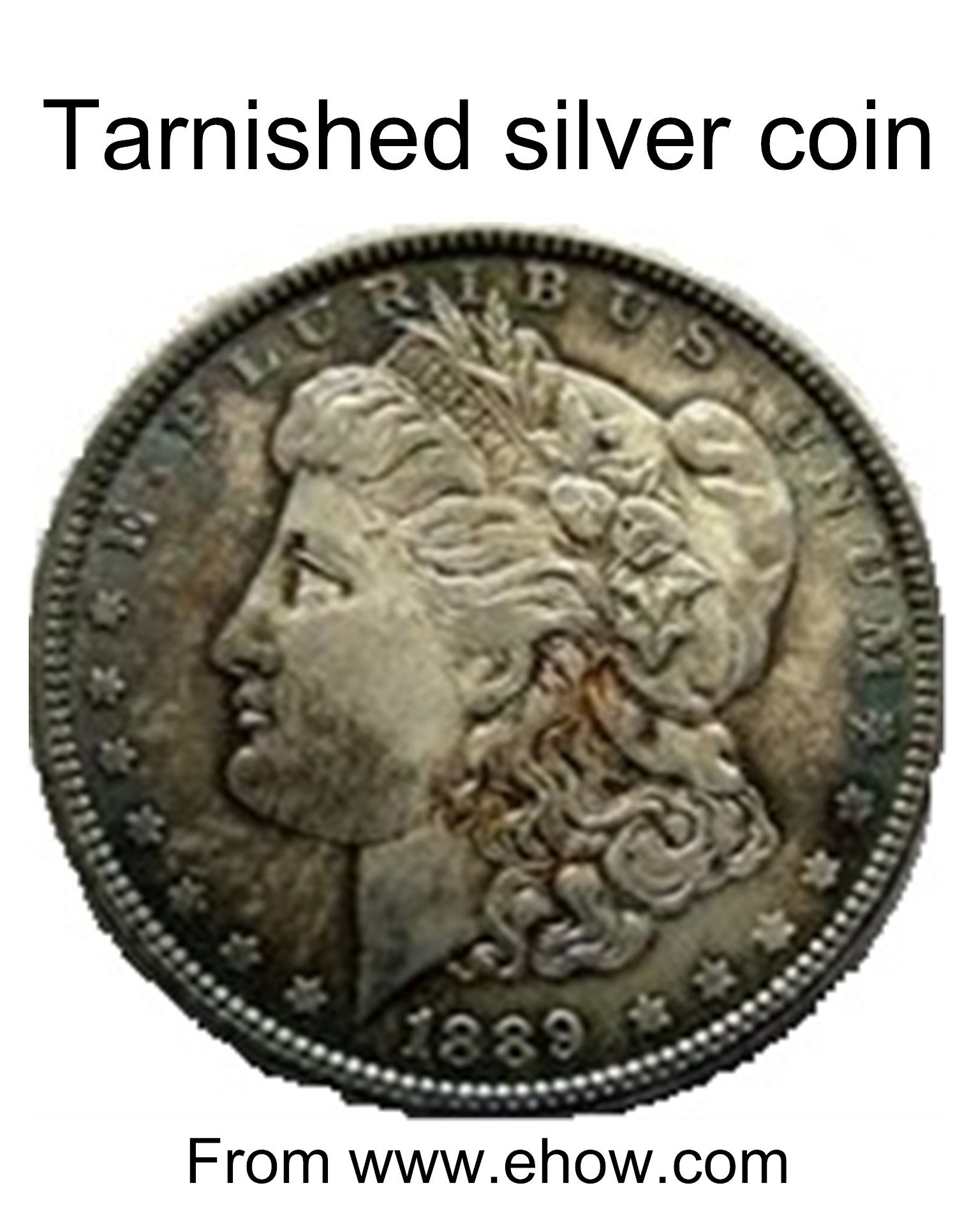Item SB001002: The mass of a silver coin is greater after it tarnishes because the number of silver atoms stayed the same and some sulfur atoms from the air linked to the silver atoms to form silver sulfide molecules.
The surface of silver coins tends to darken (tarnish) when left exposed to air for a long time. A scientist wants to find out if the mass of a silver coin will be more, less, or the same after the coin tarnishes. She starts with a shiny silver coin that is made up of only silver atoms. She measures the mass of the coin.

Then she puts the coin on a shelf and leaves it there for a long time. When she looks at the coin again it has tarnished. The scientist determines that the tarnish is silver sulfide. Silver sulfide is a molecule that is made up of silver atoms and sulfur atoms. The scientist measures the mass of the tarnished coin. She finds that the mass of the coin is more than it was before it tarnished.

Why is the mass of the silver coin greater after it tarnishes?
- Because some silver atoms changed into sulfur atoms, and sulfur atoms are heavier than silver atoms.
- Because the silver sulfide molecules that make up the tarnish were released from inside the coin, so the number of atoms and molecules increased.
- Because mass always increases when a chemical reaction takes place, and the formation of silver sulfide molecules involves a chemical reaction.
- Because the number of silver atoms stayed the same and some sulfur atoms from the air linked to the silver atoms to form silver sulfide molecules, so the number of atoms and molecules increased.
- Distribution of Responses

- Points Earned
| Group | Correct | Total | Percent |
|---|---|---|---|
| Overall | 174 | 369 | 47% |
| Grades | |||
| 6–8 | 174 | 369 | 47% |
| 9–12 | N/A | N/A | N/A |
| Gender | |||
| Male | 102 | 202 | 50% |
| Female | 72 | 167 | 43% |
| Primary Language | |||
| English | 167 | 341 | 49% |
| Other | 7 | 28 | 25% |
- Distribution of Responses

- Points Earned
| Group | Correct | Total | Percent |
|---|---|---|---|
| Overall | 260 | 369 | 70% |
| Grades | |||
| 6–8 | 260 | 369 | 70% |
| 9–12 | N/A | N/A | N/A |
| Gender | |||
| Male | 146 | 202 | 72% |
| Female | 114 | 167 | 68% |
| Primary Language | |||
| English | 252 | 342 | 74% |
| Other | 8 | 27 | 30% |
- Disciplinary Core Ideas
- PS1.B Substances react chemically in characteristic ways. In a chemical process, the atoms that make up the original substances are regrouped into different molecules, and these new substances have different properties from those of the reactants.
PS1.B The total number of each type of atom is conserved, and thus the mass does not change.

